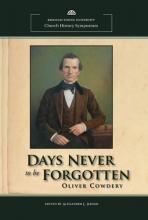The principle of choice and the new blog
As part of that effort, here’s the new blog I mentioned last week:
http://www.bookofmormoncentralamerica.com/.
Eventually I’ll have one for each of the theories: bookofmormonchile, bookofmormonbaja, bookofmormonheartland, etc.
I’m starting with Central America because it’s the one that has received the most attention, by far. I plan to cut through the clutter and discuss the essence of each theory.
Every theory comes with assumptions, interpretations, implications and consequences. Often these are obscure. In some cases, I suspect they are not completely thought out.
The agree/agree-to-disagree chart is a start. The goal is a more comprehensive analysis, in which the assumptions, interpretations, implications and consequences of each theory are set out so everyone can make an informed decision.
There is no right or wrong here; people can believe whatever they want. It’s a question of trade-offs and priorities.
_____________________
Some people consider this process contentious, and sometimes it can appear that way, but really, this discussion is a presentation of alternatives. The Book of Mormon teaches the importance of choice, and choice requires alternatives: “it must needs be, that there is an opposition in all things.”
Furthermore, no one should feel compelled or obligated to defer to anyone else’s view. Some people might consider this question to be one the scholars should solve, but I disagree. Certainly, one does not need to be a scholar to understand the choices if they are presented clearly. “Wherefore, the Lord God gave unto man that he should act for himself. Wherefore, man could not act for himself save it should be that he was enticed by the one or the other.”
In fact, the more I’ve thought about this, the more I realize the goal of reaching a consensus may have been a mistake. That goal carries the implication that a group of interested people could reach an agreement that others should follow.
Instead, this process seems designed to enable each individual to make his/her own choice. The key is that the choice be fully informed.
Looking back, that’s what I’ve tried to do on this blog; i.e., examine what has been written on the topic and discuss areas that have not been fully disclosed or analyzed. The discussion of the Hill Cumorah is a prime example.
With these principles in mind, we can all respect one another’s choices with no contention or argument. I want to understand fully what others believe and why. If I ever misstate an aspect of a theory, I hope someone lets me know so I can correct it.
Of course, this process bears the risk of people making their choices without considering all the information; i.e., people might make choices based on tradition, emotion, personal relationships, deference to others, etc. But that’s true of all the choices we make. We are each responsible for the amount of thought and effort we put into our choices.
This isn’t to say everyone needs to become an expert on the topic. But understanding the geography, in my opinion, is important for understanding the purposes of the Book of Mormon and how it can be used in our day to fulfill those purposes.
Another important point: I don’t care if anyone agrees with me or not. I do think that a full examination of the assumptions, interpretations, implications and consequences of each theory leads to a conclusion, which I have spelled out in Moroni’s America, but certainly that’s not the last word, and I’m continually adjusting my thinking as more evidence comes forth and I get more feedback.
I hope that by clarifying these issues, people who want to make informed choices can do so.
Source: Book of Mormon Wars






